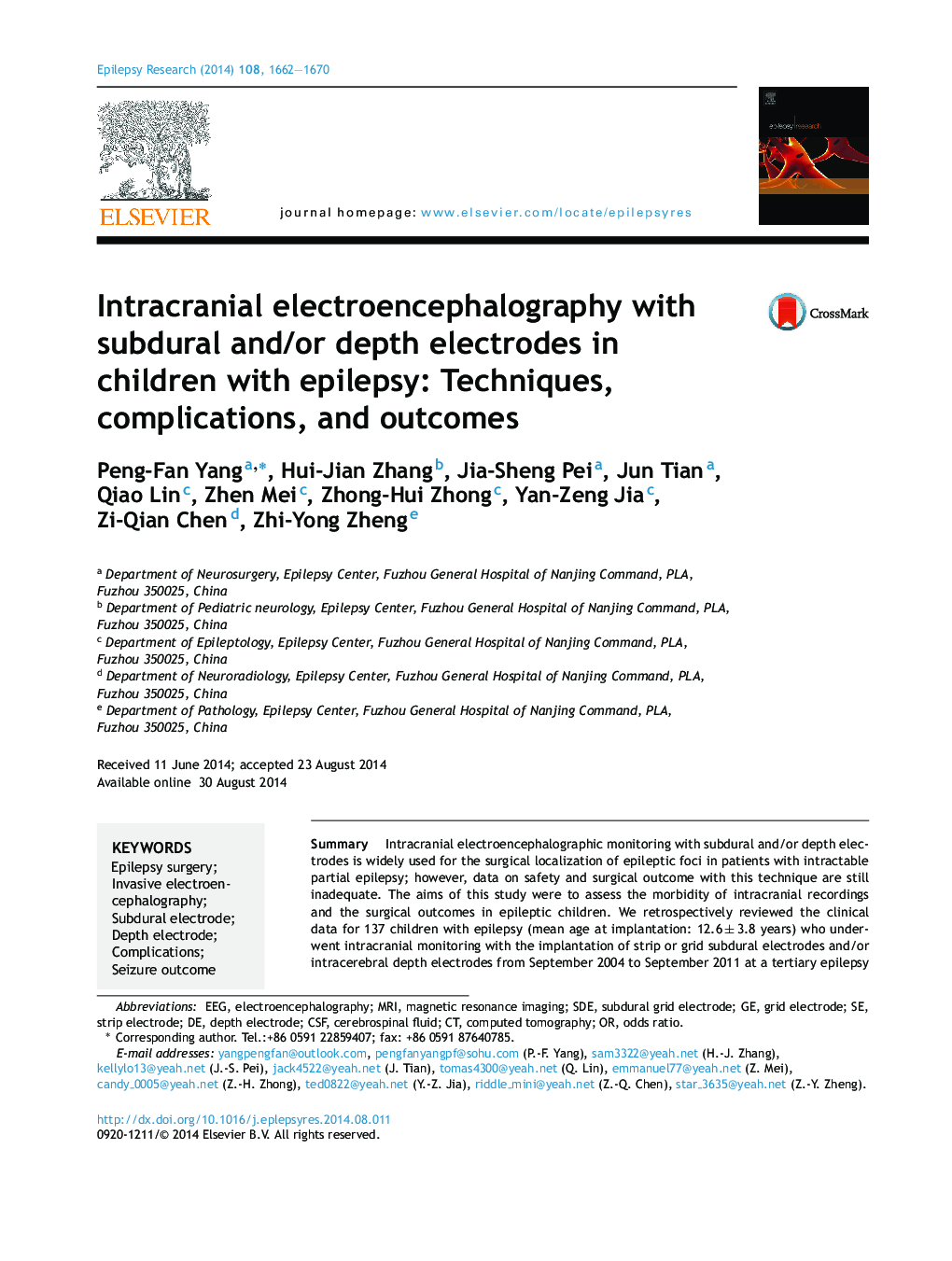| کد مقاله | کد نشریه | سال انتشار | مقاله انگلیسی | نسخه تمام متن |
|---|---|---|---|---|
| 6015486 | 1186069 | 2014 | 9 صفحه PDF | دانلود رایگان |
- Complications occurred in 29 (21.7%) patients including 15 who had intracranial hematoma.
- Among 133 patients who underwent resection 48.9% had a seizure-free outcome.
- Number of electrode contacts was an independent risk factor for intracranial hematoma.
SummaryIntracranial electroencephalographic monitoring with subdural and/or depth electrodes is widely used for the surgical localization of epileptic foci in patients with intractable partial epilepsy; however, data on safety and surgical outcome with this technique are still inadequate. The aims of this study were to assess the morbidity of intracranial recordings and the surgical outcomes in epileptic children. We retrospectively reviewed the clinical data for 137 children with epilepsy (mean age at implantation: 12.6 ± 3.8 years) who underwent intracranial monitoring with the implantation of strip or grid subdural electrodes and/or intracerebral depth electrodes from September 2004 to September 2011 at a tertiary epilepsy center in China. Complications were classified using five grades of severity (including mortality) and were further classified as either minor or severe. Outcome was classified according to Engel's classification. Regression analysis was performed to identify risk factors for complications. The mean duration of implantation was 5.3 ± 1.3 days. Among the 133 patients who underwent resection, 65 (48.9%) were seizure free (Engel Class I) at last known follow-up, which was >2 years after surgery for all patients. Also, 31 (23.3%) patients had a significant reduction in seizures (Engel Class II). Complications of any type were documented in 29 (21.7%) patients; 15 of these patients had intracranial hematoma. The results of multivariate analysis showed that the only independent risk factor for intracranial hematoma was number of electrode contacts. The most common pathologic diagnosis was focal cortical dysplasia (n = 58). Our results showed that intracranial electroencephalographic monitoring in children provides good surgical outcomes and the level of risk is acceptable. When using this technique strategies such as using as few electrode contacts as possible should be adopted to minimize the risk of intracranial hematoma.
Journal: Epilepsy Research - Volume 108, Issue 9, November 2014, Pages 1662-1670
